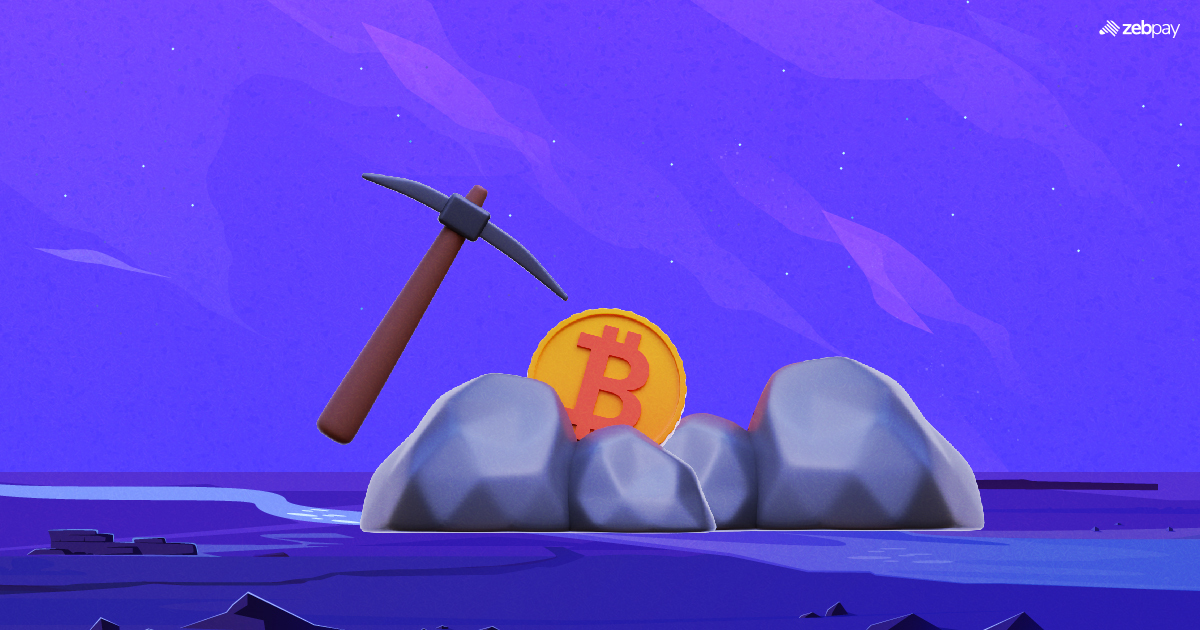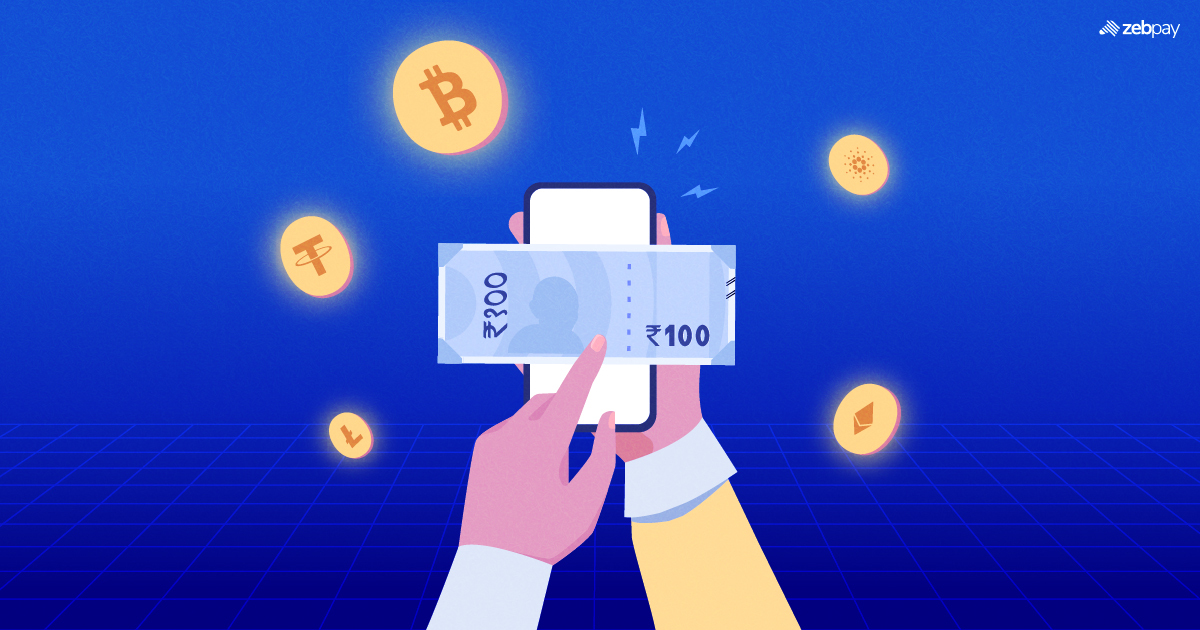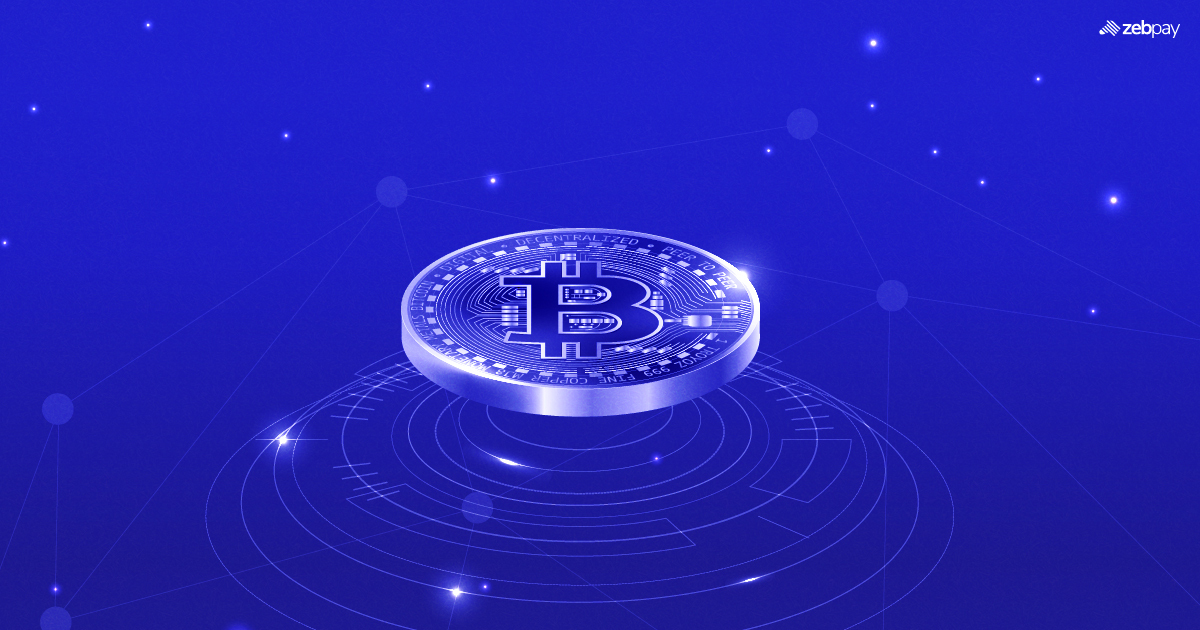06th Sep 2023| ZebPay Trade-Desk
Transaction fees in the Bitcoin (BTC) network serve as compensation for miners, motivating them to prioritize and include users’ transactions in a block. Miners typically favour transactions with higher fees as they contribute to their overall earnings. However, the fee amount can fluctuate based on factors like network congestion and the size of the transaction in bytes. Miners play a crucial role in the Bitcoin network by validating transactions and securing the network through the resolution of complex mathematical puzzles. In return for their efforts, miners receive newly created BTC, known as the block rewards or block subsidy, as well as any fees associated with the transactions included in the blocks.
Miner Income = Block subsidy + Transaction Fees
Transaction fees have become increasingly important for miners as the block subsidy decreases over time due to halving events. This trend is expected to continue as Bitcoin approaches its maximum supply of 21 million coins. This is how we can calculate the fee-to-reward ratio.
The Fees-to-reward Ratio = Total transaction Fees/ Block Reward
To grasp the significance of the Bitcoin fee-to-reward ratio, let’s explore three scenarios where this ratio is greater than 1, equal to 1, and less than 1.
Bitcoin fee-to-reward ratio greater than 1:
Imagine a scenario where users frequently engage in transactions, the block reward is 6.25 BTC, and there’s substantial demand for block space. In this case, users are willing to pay elevated fees to ensure their transactions are processed more quickly. Let’s say miners earned 7 BTC in transaction fees for the transactions included in the block. In this scenario, the fee-to-reward ratio is greater than 1 because the total transaction fees (7 BTC) exceed the block reward (6.25 BTC). Miners benefit from higher fees due to the increased demand for block space and faster transaction validation. This situation reflects a competitive and congested network where users prioritize speedy processing by offering substantial fees.
Read more: Bitcoin vs Altcoins
Bitcoin fee-to-reward ratio equal to 1:
In this case, the block reward and the total transaction fees earned by miners are identical. Let’s assume miners collected 6.25 BTC in fees, which aligns with the current block reward of 6.25 BTC. Here, both fees and the block reward contribute equally to the miner’s revenue. This scenario reflects a balance between users’ willingness to pay fees and the available block space.
Bitcoin fee-to-reward ratio less than 1:
Now, envision a situation where there is reduced demand for transactions on the network, and users are less inclined to pay high fees for validation. Suppose miners received 4 BTC in transaction fees, but the block reward remains at 6.25 BTC. In this instance, the fee-to-reward ratio is 0.64, indicating that the block reward exceeds the cumulative transaction fees collected by miners. This could occur during periods of fewer transactions in the pool, lower network congestion, or when users are not aggressively competing to have their transactions included in the next block.
This plays a very crucial role which we will discuss here in detail:
Miner Incentives and Security: Miners are vital for the security and validation of Bitcoin transactions. They dedicate computational power and resources to solve complex mathematical puzzles and mine new blocks. Incentives, such as transaction fees and the block reward (newly created BTC), motivate miners to participate in this process. When the fee-to-reward ratio is higher, miners are more likely to prioritize transactions with substantial fees, leading to faster confirmation times and enhanced network security.
Prioritising Transactions: In times of high network congestion, where numerous transactions compete for limited block space, the fee-to-reward ratio becomes crucial. Users who seek quick confirmation of their transactions may offer higher fees. Miners are incentivized to include these high-fee transactions in the blocks they mine, as it increases their potential profits. This practice helps expedite transaction processing and mitigates network congestion.
Sustainability Post-Halving: Bitcoin’s protocol dictates that the block reward is halved approximately every four years. Transaction fees progressively constitute a larger portion of miners’ income as the block reward diminishes over time. Consequently, the fee-to-reward ratio is a valuable metric to assess whether miners can sustain their operations solely through transaction fees as the block reward decreases.
Read more: Bitcoin Price Prediction
Network Resilience: The fee-to-reward ratio reflects the financial health of the Bitcoin network. A healthy ratio indicates that users are willing to pay reasonable transaction fees, supporting network security and continuous operation. Consistently low ratios could discourage miners, potentially compromising network security and transaction processing capacity.
Market Sentiment: User behaviour and the fee-to-reward ratio can serve as indicators of market sentiment. High transaction costs may signal increased interest in using the Bitcoin network during such periods. Conversely, low fees may suggest reduced network demand and activity.
Read more: Bitcoin Vs Dollar
Adapting Incentives: The fee-to-reward ratio adapts to changes in market conditions, technological advancements, and user preferences. These variables, alongside the broader crypto landscape, offer insights into the network’s responsiveness and adaptability to evolving dynamics.
The debate over the importance of a higher Bitcoin fee-to-reward ratio for the financial health of the Bitcoin network is multifaceted, with arguments on both sides:
Support for a Higher Block Reward and Reduced Transaction Costs: Proponents of this view argue that a larger block reward and lower transaction costs create stronger short-term incentives for miners. This approach aims to maintain active miner participation in transaction validation and network security. By focusing on immediate cash gains, miners are incentivized to continue their efforts.
Support for a Balanced Fee-to-Reward Ratio: Advocates for a balanced fee-to-reward ratio contend that the gradual reduction in block rewards through Bitcoin halving events is a deliberate strategy to transition the network toward sustainability primarily reliant on transaction fees. This approach seeks to prevent sudden network disruptions and encourages a gradual shift toward transaction fees as the primary source of miner income. With increasing transaction volumes and user reliance on the Bitcoin network, higher transaction fees can offset declining block rewards, ensuring miner profitability and fostering a healthy fee market.
The ongoing discussion reflects the complex interplay between short-term and long-term incentives for miners, network security, and the sustainability of the Bitcoin ecosystem. Finding the right balance between these factors is essential for the network’s continued success.
In the post-mining stage, when all Bitcoin has been mined, and the block reward has reached 0, the fee-to-reward ratio will no longer be influenced by the block reward since it will no longer exist. Instead, the ratio will solely depend on the transaction fees users are willing to pay to have their transactions prioritized in blocks. During this phase, the fee-to-reward ratio will remain relevant as it reflects the competition among users to have their transactions processed quickly. Users will adjust their fee offers based on their transaction urgency and network conditions. Miners, in turn, will prioritize transactions with higher fees, as they seek to maximize their earnings.
Read more: What is Bitcoin Hash Rate
As a result, the fee-to-reward ratio will continue to play a crucial role in determining the speed and reliability of transaction confirmations in the Bitcoin network. Users opting for higher fees will likely experience faster transaction processing, while those who choose lower fees may face longer confirmation times. This dynamic will persist in the absence of a block reward, highlighting the ongoing significance of transaction fees in sustaining the network.
To stay up to date with the latest crypto news, visit ZebPay blogs. Click on the button below to trade on ZebPay.







